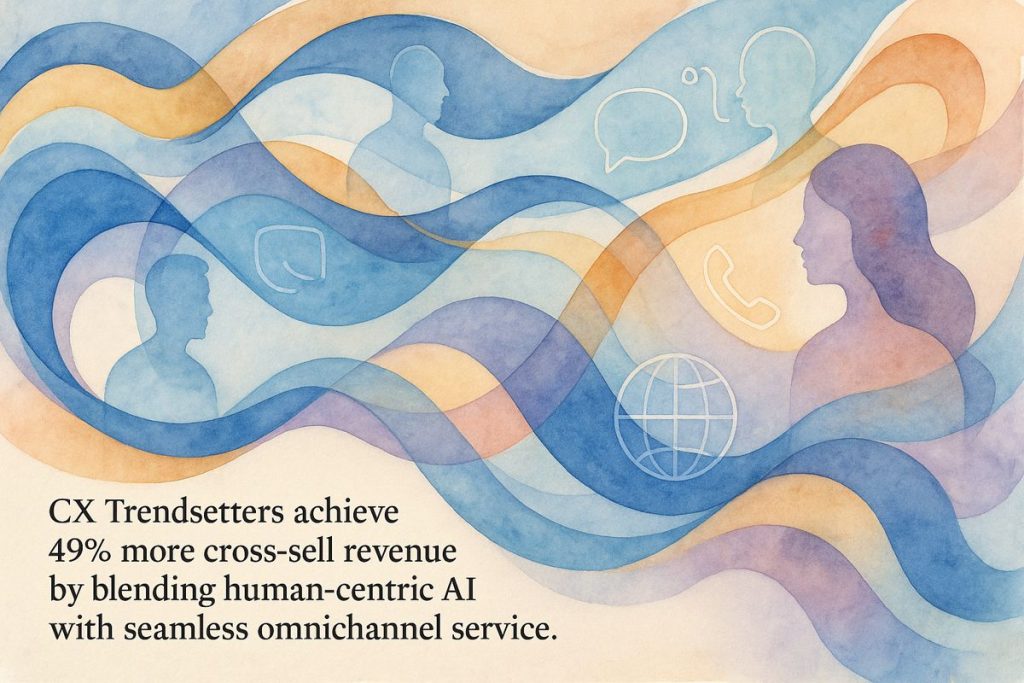Customer experience will be ruled by smart, human-like AI and smooth communication across every channel.
Zendesk’s 2025 CX Trends predict that customer experience will be ruled by smart, human-like AI and smooth communication across every channel. The report shows that companies using these trends—like friendly AI, personal touches, and teamwork—attract more customers, keep them happy, and sell more. Customers want to chat with brands anywhere, anytime, and have their needs guessed before they even ask. If businesses mix tech and empathy right, they’ll stand out and win big in the future.
What are the key customer experience (CX) trends for 2025 according to Zendesk?
Zendesk’s 2025 CX Trends highlight empathetic, human-like AI, seamless omnichannel engagement, proactive personalization, and integrated teams as the main drivers of superior customer experience. Companies embracing these CX trends see higher customer acquisition, retention, and cross-sell rates, setting new industry benchmarks for customer satisfaction.
Coffee, Data, and the Shape of Things to Come
Let’s set the scene: It’s 6:57 a.m., the aroma of overcaffeinated espresso hangs in the air, and my inbox is a palimpsest of newsletters, dashboards, and the occasional meme from a colleague who should probably write for The Onion. Buried somewhere between all that? Zendesk’s 2025 Global CX Trends. Normally, I’d sigh and file it away as another glossy exercise in corporate optimism—but this one’s different. Over 10,000 humans, twenty-two countries, and more numbers than a Moscow subway map. It’s almost enough to make a grown analyst giddy.
I remember the first time I saw a chatbot flounder, back in 2017—”I’m sorry, I didn’t understand that,” it chirped, again and again, like a digital woodpecker. Now, we’re talking about AI so natural it could plausibly moonlight as your grandmother on WhatsApp. The stakes? Not just bragging rights, but the future of customer loyalty, revenue streams, and—let’s be honest—our collective sanity.
Empathetic AI: Not Your Grandfather’s Chatbot
The report’s crown jewel is clear: AI isn’t just here; it’s metamorphosing. But not into the cold, transactional automaton I once dreaded. No, today’s leading CX teams are stitching together hyperspectral AI—yes, I said it—with a distinctly human touch. Zendesk calls these vanguard firms “CX Trendsetters,” and the data? Blunt as a sledgehammer: 33% higher customer acquisition, 22% higher retention, and a cross-sell boost of nearly 50% (check the numbers). That’s not just statistical noise.
Once, while troubleshooting a billing error on a holiday (yes, masochism), I was startled when the bot not only resolved my issue but recommended a discount code for my next purchase. Elation? Maybe. Mild suspicion? Absolutely. But it worked—I returned.
Omnichannel: The New Air We Breathe
Let’s not kid ourselves: being everywhere your customer is doesn’t make you a trailblazer. It just means you’re invited to the dance. According to Zendesk, omnichannel engagement is the baseline, not the summit (read about the new era). Customers demand the equivalent of teleportation—start on Instagram DM, jump to email, finish on the app. No context lost. No exasperated sighs.
Here’s the rub: 61% of consumers are downright jazzed about this immersive, channel-hopping fluidity, especially when it’s powered by AI that can slip seamlessly from chatbot to human. For brands, this isn’t just a technical hurdle—it’s a kind of operational balalaika, requiring you to harmonize data, protocols, and personalities across the enterprise.
I’ll admit, the first time I tried to integrate Slack notifications into our Zendesk instance, it felt like assembling IKEA furniture blindfolded. Did I curse? Da. But when it finally worked—aha!—the dopamine rush was real. It also reinforced a hard truth: the more invisible the technology, the better the experience feels.
Personalization and the Art of Not Being Creepy
Personalization: the double-edged sword of modern CX. On one hand, 59% of customers want companies to “know them”—anticipate needs, solve problems, even before they hit send. On the other, there’s always the risk of veering into surveillance-state territory. (Cue the nervous laughter.)
Zendesk’s study is unequivocal: proactive service isn’t just a “nice to have.” Predictive analytics, nudges, and even “we noticed you…” reminders are now table stakes, not differentiators. The key is using data with the finesse of a sushi chef, not a sledgehammer. Texture matters—nobody likes a cold, generic email any more than they like week-old bread.
I recall once getting a service call from a utility company before I even realized my bill was overdue (thank you, predictive models). Relief washed over me—tinged, if I’m honest, with a tiny pang of paranoia. Was I being watched? Maybe. Did I pay on time? Definitely.
Teams, Silos, and the ROI Tightrope
All this orchestration means nothing if your teams are walled off like medieval fortresses. Zendesk’s research is loud on this point: the future belongs to integrated squads, not isolated departments.
